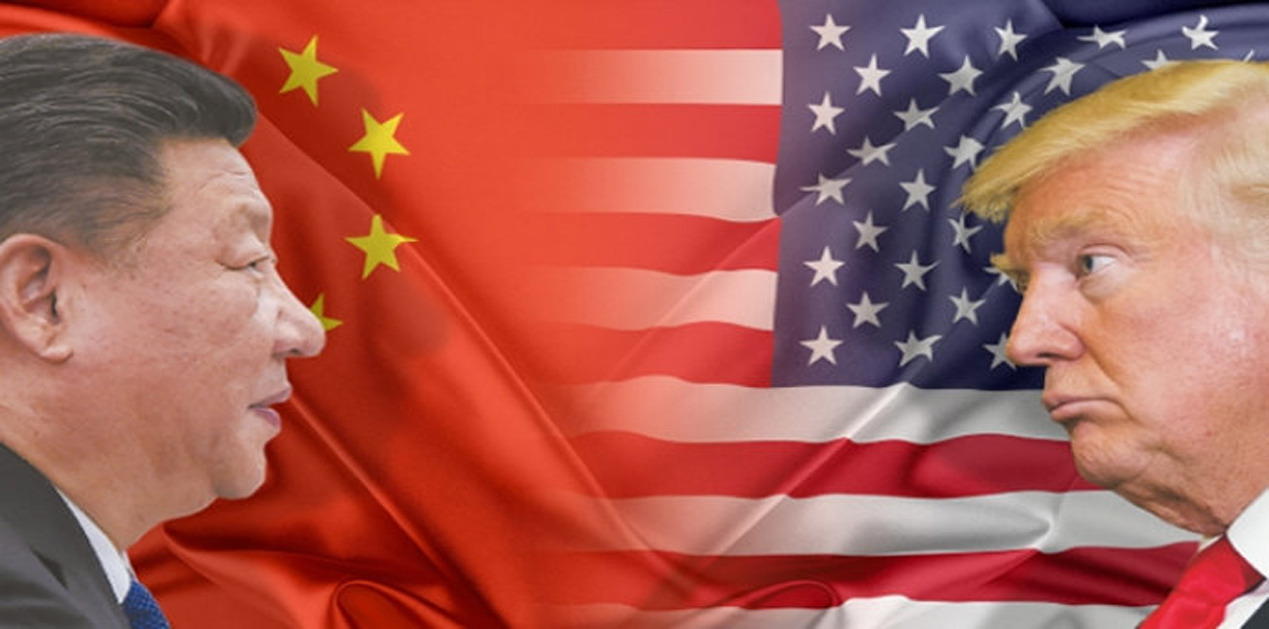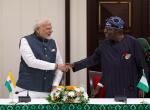Prior to the G20 meeting, there were indications of some respite in the US and China. During the working dinner meeting, at the G 20 meeting held in Buenos Aires, Argentina, Donald Trump and Xi Jinping held a ‘highly successful meeting’.i According to the agreement, the US and China will not put any new tariffs for 90 days. Nevertheless, the prevailing tariffs will remain unchanged. Until now the US has levied three sets of tariff; 25 per cent on goods worth of USD 34 billion worth of goods (6 July 2018 onwards), 25 per cent on USD 16 billion worth of goods (August 23, 2018 onwards) and 10 per cent on USD 200 billion worth of goods (24 September 2018 onwards). Prior to the meeting, it was decided that the US would raise the tariff on USD 250 billion worth of Chinese goods, to 25 per cent from 10 per cent on Jan 1, 2019. With the truce, it will not be implemented. An additional USD 267 billion shall also not be implemented.
Differing Official Statements
The White House press release emphasized that both the leaders have “agreed to immediately begin negotiations on structural changes with respect to forced technology transfer, intellectual property protection, non-tariff barriers, cyber intrusions and cyber theft, service and agriculture.” This should be completed within 90 days, if they fail to reach an agreement the 10 per cent tariff will be raised to 25 per cent. .ii Treasury Secretary Steven Mnuchin later said on Fox News that China would make “additional purchases of USD 1.2 trillion” and “if that is real, that will close the trade deficit.” .iii The US also agreed to a deadline of three months for the talks to address China’s alleged intellectual property theft and forced transfer of technology. Non-compliance of the regulations might lead to an escalation of the tariff. .iv
In stark contrast, Beijing although termed the Xi-Trump meeting as ‘very successful’ but did not mention the 90-days deadline, or the possibility that the tariff escalation could return if no agreement was reached. Details of the purchase of American goods were also not mentioned. The statement mentioned that on economic and trade issues, Xi said that it was very normal that the two countries have some disagreements and the key was to work out a mutually acceptable solution the spirit of mutual respect, equality and mutual benefit. Ironically, the Chinese language was reminiscent of the liberal western diplomatic language: “At the working dinner after the conclusion of the 13th Group of 20 summit, Xi and Trump had an in-depth exchange of views on China-US relations and international affairs of mutual concern in a friendly and candid atmosphere, reaching important consensus and agreeing not to impose new additional tariffs. The two sides agreed to expand cooperation based on reciprocity and mutual benefit and manage differences based on mutual respect so as to jointly advance China-US relations with coordination, cooperation and stability as the defining features” v.
The Chinese Spokesperson in his regular press conference the same day was also asked regarding the differing sentiment of the official statements post the Xi-Trump meeting. He responded that the very fact, a consensus was reached during the summit was highly significant. The consensus had halted the further escalation of China-US trade frictions and opened up new prospects for win-win cooperation.vi
An article in the People’s Daily on December 4 was the first to mention the 90-day deadline. It detailed on the Chinese position to not engage in any trade war and highlighted the efforts taken by the Chinese government in managing the trade-war. It further reinstated that neither side has gained from this on-going friction.vii Notably, a report released by the Baker Mckenzie has highlighted that the trade frictions between both the sides could affect 0.8 per cent of the global gross domestic product by 2020 and “severely undermine” the ability of companies to operate across borders. viii
The Curious Case of Qualcomm
The White House statement also said that Xi is open to approving the US chipmaker Qualcomm’s purchase of Dutch semi-conductor company NXP. Trump had essentially killed Broadcom's proposed buyout of Qualcomm, citing national security concerns earlier in April 2018. Later, Qualcomm had to scrap its USD 44 billion plan to purchase Dutch chipmaker NXP in July 2018 after failing to acquire approval from China’s State Administration of Market Regulation, which oversees anti-monopoly regulations. China didn't outright block Qualcomm from acquiring NXP. But as Qualcomm and NXP had set a deadline for the merger—and they needed approval from Chinese anti-trust authorities, since each company does significant business in China. China essentially ran out the clock, forcing Qualcomm to pay the USD 2 billion termination fee.ix
China’s inaction on regulatory approval for a deal involving a big US technology company has been seen as retaliation for Donald Trump’s tariffs on Chinese imports. The end of the deal was a big setback for Qualcomm, which had hoped that the NXP deal would reduce its reliance on licensing chip designs for smartphones. The deal had intended to expand Qualcomm into new markets particularly the automotive sector.
It may be recalled that on August 14, 2017, President Trump had instructed the US Trade Representative (USTR) to determine, under Section 301 of the Trade Act of 1974, to investigate China’s laws, policies, practices, or actions. Charges laid out by the USTR’s office in its report ‘Update concerning China’s Acts, Policies and Practices related to Technology Transfer, Intellectual Property, and Innovation’ were:-
- Chinese use of joint ventures and other foreign ownership restrictions to compel technology transfer from American companies,
- Chinese employment of nonmarket pressures to compel American companies to license their technology to Chinese firms on a disadvantageous basis,
- Chinese government direction of investment and other forms of acquisition of American technologies and companies, in order to access American technology and intellectual property, and
- Chinese government support for the acquisition of technology, intellectual property, sensitive commercial information, and trade secrets through computer network exploitation.
x
The US felt that after repeated engagement efforts and international admonishments of its trade technology transfer policies, China had not responded constructively and failed to take any substantive actions to address US concerns. Thus, the first series of tariffs were imposed in July 2018. xi
The Chief Financial Officer-Meng Wanzhou, of the Huawei, was detained in Canada. Inadvertently, it was a way of putting pressure on China. She is accused of deceiving a multinational bank about Huawei’s control of a company operating in Iran. If she is deported to the US, she would face charges of conspiracy to defraud multiple financial institutions. Perhaps it is a step taken by the US to hold back Huawei. The US has been sceptical about the Huawei’s security threat to the US intelligence and has stressed that the American carriers should not use Huawei Equipment. In fact, it is part of the larger conflict over the technology. The arrest highlights that fundamental conflict between the two sides is getting severe. Both the countries want the next-generation technologies that will push their economy and national security. The US has already imposed new rules and regulation for China to acquire US technology.xii
What to Expect Ahead
The trade sanctions have affected both the sides and neither seems to be the beneficiary until now. The US trade deficit until October 2018, was USD 77.2 billion. General Motors is planning to shut down its seven plants, four of them were in the US itself and not in China.
Although the truce provides some respite for both the sides, long impending issues are unlikely to be sorted that will lead to significant change. The final outcome of the agreement remains uncertain. China has got some buffer time in the interim period. If China is able to live up to the US expectations some arrangements may take place. Further, Donald Trump has emphasized that he is ready to intervene in the case if it can help in the trade deal with China. xiii
The 90 days, time period may not be sufficient to resolve the complicated issue. Given the nature of the dispute, it might go well beyond trade and technology.
End Notes:
iii. https://www.wsj.com/articles/details-emerge-in-u-s-s-trade-truce-with-china-1544360520
iv. https://www.ft.com/content/812104b6-f5b3-11e8-af46-2022a0b02a6c
v. http://en.people.cn/n3/2018/1203/c90000-9524437.html
vi. https://www.fmprc.gov.cn/mfa_eng/xwfw_665399/s2510_665401/2511_665403/t1618558.shtml
vii. http://en.people.cn/n3/2018/1204/c90000-9525067.html
ix. https://www.wired.com/story/china-blocks-qualcomms-attempt-to-buy-a-dutch-chipmaker/
x. https://ustr.gov/sites/default/files/enforcement/301Investigations/301%20Report%20Update.pdf
xi. https://www.ft.com/content/2635fa64-f6d7-11e8-af46-2022a0b02a6c
xii. https://edition.cnn.com/2018/12/08/perspectives/huawei-cfo-arrest-us-china-trade/index.html








.jpg)


Post new comment